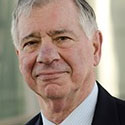Filter by
You must be a CTBUH Member to view this resource.
Incheon Tower
151 Incheon Tower
Building
Vision
Residential / Hotel / Office
Composite
487 m / 1,598 ft
102
The Design Engineer is usually involved in the front end design, typically taking the leadership role in the Schematic Design and Design Development, and then a monitoring role through the CD and CA phases.
You must be a CTBUH Member to view this resource.
Usually involved in the front end design, with a "typical" condition being that of a leadership role through either Schematic Design or Design Development, and then a monitoring role through the CD and CA phases.
The Design Engineer is usually involved in the front end design, typically taking the leadership role in the Schematic Design and Design Development, and then a monitoring role through the CD and CA phases.
The main contractor is the supervisory contractor of all construction work on a project, management of sub-contractors and vendors, etc. May be referred to as "Construction Manager," however, for consistency CTBUH uses the term "Main Contractor" exclusively.
Other Consultant refers to other organizations which provided significant consultation services for a building project (e.g. wind consultants, environmental consultants, fire and life safety consultants, etc).
These are firms that consult on the design of a building's façade. May often be referred to as "Cladding," "Envelope," "Exterior Wall," or "Curtain Wall" Consultant, however, for consistency CTBUH uses the term "Façade Consultant" exclusively.
3 July 2017 - Event
16 September 2014 - Event

16 September 2014 | Incheon
The 151 story super high-rise building located in an area of reclaimed land constructed over soft marine clay in Songdo, Korea. The focus of this...

14 March 2019
Kyoung Sun Moon, Yale University
Tall buildings are one of the most viable solutions to deal with the global phenomenon of rapid population increase and urbanization. While tall buildings are...

16 September 2014 | Incheon
The 151 story super high-rise building located in an area of reclaimed land constructed over soft marine clay in Songdo, Korea. The focus of this...

07 November 2013 | Incheon
Clyde N. Baker, Jr., Fazlur R. Khan Lifetime Achievement Medal Winner, discusses his lifetime work as a geotechnical engineer including working on 7 of the...

19 September 2012 | Incheon
The Portman Companies were one of the first foreign entities to establish business relations in China, and have since become recognized for quality building design...

19 September 2012 | Incheon
John C. Portman, III of John Portman & Associates is interviewed by Jeff Herzer during the 2012 CTBUH Shanghai Congress at the Jin Mao, Shanghai....

12 October 2011 | Incheon
This presentation presents new configurations that can be used in twin towers linked by sky bridges by installing mega toggle damper system between several stories...

12 October 2011 | Incheon
Presentation includes the structural system of Incheon 151 tower focusing on the overall optimization works. It provides the structural engineering techniques utilized to optimize the...

11 October 2011 | Incheon
Harry G. Poulos from Coffey Geotechnics presents on the complexity of the foundation design of the 151 Incheon Tower and the site conditions they faced.

14 March 2019
Kyoung Sun Moon, Yale University
Tall buildings are one of the most viable solutions to deal with the global phenomenon of rapid population increase and urbanization. While tall buildings are...

16 September 2014
Ahmad Abdelrazaq, MoonSook Jeong, Soogon Lee & Sangki Jang, Samsung C&T
The 151 story super high-rise building located in an area of reclaimed land constructed over soft marine clay in Songdo, Korea. The focus of this...

01 November 2011
CTBUH Research
As of the year 2000, there were only 9 buildings 150 meters or taller in all of South Korea. Just twelve years later, there are...

10 October 2011
Ahmad Abdelrazaq, Samsung C&T; Harry G. Poulos & Frances Badelow, Coffey Geotechnics; Sung Ho-Kim, Jinyoung ENC Enterprise
The 151 storey super high-rise building is located in an area or reclaimed land constructed over soft marine clay in Songdo, Korea and is currently...
5 July 2017
CTBUH Singapore, in coordination with CTBUH Malaysia and CTBUH Thailand, hosted a multi-city seminar on sustainable design in Singapore, Kuala Lumpur, and Bangkok.
16 September 2014
The Building Movement and Damping Technical Workshop reviewed some of the latest strategies and concepts for helping tall buildings avoid movement in seismic and wind events.
Subscribe below to receive periodic updates from CTBUH on the latest Tall Building and Urban news and CTBUH initiatives, including our monthly newsletter. Fields with a red asterisk (*) next to them are required.
View our privacy policy